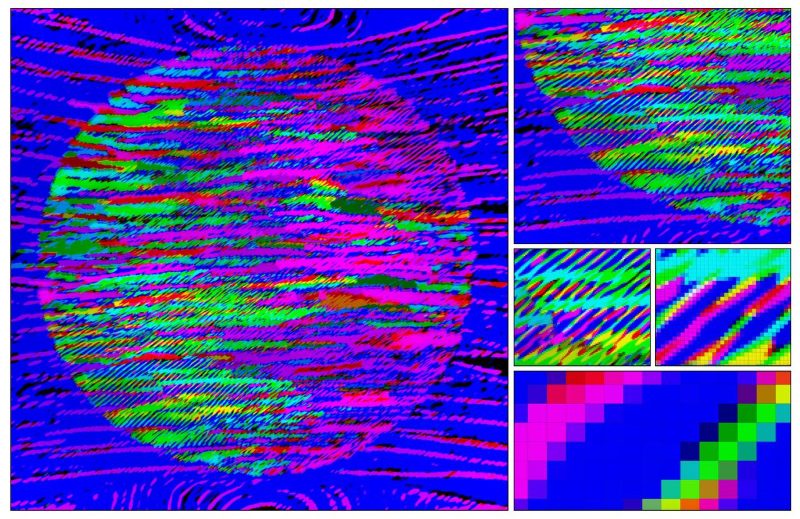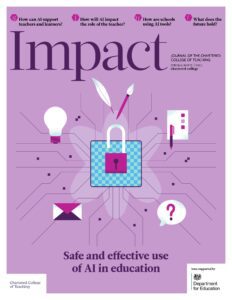Using generative AI to enhance teaching and learning

TIM CLARKE, HENRY PENFOLD, ANNIE HARRIS, AMY GREEN, LAUREN ANDERSON AND TAMARA GODDARD, CORNERSTONE C of E PRIMARY, UK
Cornerstone C of E Primary in Hampshire is a Microsoft Showcase School and a partner in Hampshire EdTech Hub. An aspect of both of these roles is to explore different ways of using technology and to provide examples as case studies – particularly from a primary school perspective – to share with other staff and schools.
John Hattie (2023) states that ‘It is time to focus more on the implementation effects when using technologies along with teaching methods’ (p. 408), and a recent Education Endowment Foundation (EEF) report shares the conclusion that schools should ‘consider the pedagogical rationale for how technology will improve learning (Stringer et al., 2021).
Generative AI
We were interested in exploring how we could benefit from the use of generative AI (GenAI) in our various roles. Following staff CPD (continuing professional development) sessions, staff discussed and agreed the purposes for using AI. There are two main agreed purposes, which are outlined in our AI policy:
- to enhance the teaching and learning in classes across the school and improve outcomes
- to support and reduce workload for staff across the school (Cornerstone C of E Primary School, 2024).
Responsible use
The digital leaders at Cornerstone networked with a range of external EdTech experts and read a range of blogs and research to further their understanding of Generative AI and how it was being utilised in different settings. This was then shared with the staff team, who discussed and agreed their responsibilities to address any potential issues of using AI. Only staff access and use GenAI at Cornerstone. Their responsibilities are summarised below:
- Staff should ensure that their use of AI systems treats all people fairly
- Staff should ensure that their use of AI systems is reliable and safe
- Staff should ensure that their use of AI systems is secure and respects privacy
- Staff should ensure that their use of AI systems is transparent and understandable
- Staff must be accountable for their use of AI systems
- Staff must take responsibility for any content generated by AI by checking for accuracy, reliabilityIn assessment, the degree to which the outcome of a particular assessment would be consistent – for example, if it were marked by a different marker or taken again and fairness.
Development and case studies
Staff at Cornerstone received training through staff meetings on a range of Generative AI apps (including ChatGPT, Microsoft Copilot and Suno) and were encouraged to trial a range of purposeful ways of using these. Staff created case studies to share and evaluate how they have used AI and the impact that it has had on student learning. These were then shared so that staff could learn from each other. The following case studies are examples from Key Stages 1 and 2.
Case study A: Key Stage 1 English – Bog Baby
Purpose for learning
The first week of the English unit of learning required students to write a character description within the context of the story Bog Baby by Jeanne Willis. To add purpose and enrichment, instead of the children writing a similar description about the main character, we planned for the children to imagine, create and write about their own ‘Bog Baby’. Once the children had written their description, this would then be put into a Generative AI app to generate a picture of their writing.
Application
In Year 1, Microsoft Copilot was modelled at the beginning of the unit by the teacher. This involved the teacher inputting a brief, simple description and the class then viewing the image that was generated, before adding additional words and phrases to change the AI outcome. The children then created their own character descriptions using a range of features, including noun phrases and simple and compound sentences.
In Year 2, Microsoft Copilot was modelled as above. The children then created their own character descriptions using expanded noun phrases, similes and adventurous vocabulary.
Effect on learning
By modelling the use of AI to generate images as part of the input, we could clearly distinguish the importance of using noun phrases when writing to enrich the character description. The children were extremely motivated to write and were passionate about sharing the ‘Bog Baby’ that they had created.
Case study B: Key Stage 2 English – Planet Zigon
Purpose for learning
We aimed to plan a non-chronological report on a ‘newly discovered planet’ called Zigon.
Application
The learners in Year 5 had to apply the grammar that they had been taught during their English learning journey (modal verbs, figurative language and fronted adverbials) to describe their own version of the planet Zigon. The class used Microsoft Copilot to generate a few images of what Zigon could look like in order to help them to think of ideas. We then entered some descriptions into Copilot from the WAGOLL example (what a good one looks like), plus some additional elements. We then input a prompt to AI to generate an example of Zigon as if it were a planet like Earth.
Effect on learning
The learners were able to visualise the planet and come up with a more effective description and some carefully crafted sentences, applying the grammar that had been taught and practised. As this task was focused on giving the learners ownership of the planet that they were creating, and therefore they were encouraged to use their imagination – which, for some children, can be challenging – AI was a useful tool for creating a few different ideas of what the planet could look like.
Using a Generative AI tool to generate some example sentence starters also supported some learners with SEND (special educational needs and disabilities) and EAL (English as an additional language). The use of AI in this lesson created a sense of awe and wonder for the children, who were fascinated by the pictures generated by their descriptions.
Case study C: Key Stage 2 English – ‘The Raven’ poem, for pupils with SEND
Purpose for learning
In school, we have a range of learners who sometimes require work being simplified or the use of scaffolds to allow them to access the same learning as others.
Application
We used Microsoft Copilot to carefully create a prompt that simplified the poem into language that certain learners in Year 6 would be able to access.
This version was then copied into Widgit (a GenAI tool) to generate a dual-coded version of the poem, including both text and images.
Effect on learning
The learners with SEND were then able to access the learning task and join in whole-class discussions, after having a much better understanding of the poem that had been simplified. It also allowed the learners to be able to part take in lessons and feel part of the whole class.
Conclusion
As a school, we have seen many benefits for staff and learners in our developing use of GenAI. We will continue our learning and developments by taking part in Ofsted’s AI research project. We want to maintain oversight of its safe, purposeful and responsible use through a balance of innovation and exploration with governance and accountability. We are achieving this through our AI policy and regular SLT (senior leadership team) and staff meetings. We aim to keep producing case studies to share examples within our staff team and with the wider primary education sector.
This article is based on The impact of AI on enhancing teaching and learning (Cornerstone C of E Primary, 2024).
The examples of AI use and specific tools in this article are for context only. They do not imply endorsement or recommendation of any particular tool or approach by the Department for EducationThe ministerial department responsible for children’s services and education in England or the Chartered College of Teaching and any views stated are those of the individual. Any use of AI also needs to be carefully planned, and what is appropriate in one setting may not be elsewhere. You should always follow the DfE’s Generative AI In Education policy position and product safety expectations in addition to aligning any AI use with the DfE’s latest Keeping Children Safe in Education guidance. You can also find teacher and leader toolkits on gov.uk .
- Cornerstone C of E Primary School (2024) The impact of AI on enhancing teaching and learning. Available at: https://cornerstoneprimary.hants.sch.uk/digital-cornerstone/ai/ (accessed 11 March 2025).
- Cornerstone C of E Primary School (2025) AI policy. Available at: https://cornerstoneprimary.hants.sch.uk/digital-cornerstone/ai/ (accessed 11 March 2025).
- Hattie J (2023) Visible Learning: The Sequel: A Synthesis of Over 2,100 Meta-Analyses Relating to Achievement. Abingdon: Routledge.
- Stringer E, Lewin C and Coleman R (2021) Using digital technology to improve learning: A guidance report. Education Endowment Foundation. Available at: https://d2tic4wvo1iusb.cloudfront.net/production/eef-guidance-reports/digital/EEF_Digital_Technology_Guidance_Report.pdf?v=1734869266 (accessed 4 February 2025).
- Team Digital Cornerstone (nd) Primary (K-5) case studies. Available at: https://sway.cloud.microsoft/UDoSTydjFOzUMkLO?ref=Link (accessed 4 February 2025).










